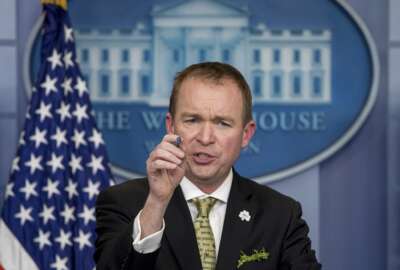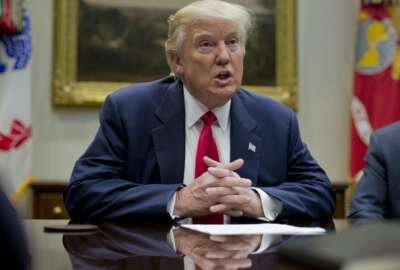

The Environmental Protection Agency's CFO said offices should continue to follow April 2017 hiring guidance, while the agency prepares its FY2017 enacted operating...
The Environmental Protection Agency is setting aside $12 million to help cover early buyouts and early retirements triggered by President Donald Trump’s government reorganization directive.
The $12 million in VERA/VSIP incentive payments are included in carryover funds totaling $24 million, according to an internal memo sent from EPA acting Chief Financial Officer David Bloom, and obtained by Federal News Radio.
The $24 million also includes $5 million for case management and expert witnesses for the Office of Enforcement and Compliance Assurance, a combined $4 million for rent and space consolidation efforts for the Office of Administration and Resources, and $800,000 for the EPA administrator’s security.
It was unclear to which year the carryover funds apply.
“Senior leadership made decisions to allocate the carryover funds set aside earlier this year to address [the] agency’s priorities for incentive payments for workforce reshaping, support for the Office of Enforcement and compliance, travel for the Administrator’s protective detail, rent, continued space reduction efforts, eDiscovery, agency cloud services and the [Office of General Counsel’s] workforce support,” Bloom said in his memo. “Similar to last year, Congress provided a limited exception to the reprogramming limits for carryover funds in the [Environmental Programs and Management] account.”
Bloom said the Office of Management and Budget is expected to review EPA’s 2017 enacted operating plan by May 25, and EPA is required to submit the plan to Congress on June 5.
“Your resource management staff will need to prepare the data under a challenging schedule to adhere to the deadlines,” Bloom said. “The Office of Budget will send technical guidance providing additional information necessary to develop the details for the operating plan.”
A request for comment from EPA was not immediately returned.
Trump signed the Consolidated Appropriations Act of 2017 earlier this month. The EPA received about $208 million less than the $8.2 billion it asked for in fiscal 2017 as part of the appropriations bill.
The funding bill also directed EPA to factor in rescissions — legislation repealing a previous law laying out Congress’ authority to spend a certain amount of money — to the science and technology programs, and environmental programs and management. Those amount to about $90.3 million according to the final bill.
EPA’s decision to offer early buyouts and retirement was part of an April 17 hiring guidance, obtained by Federal News Radio.
In that guidance from EPA acting Deputy Administrator Michael Flynn, he said the agency’s goal is to complete the early out program by the end of June.
Flynn said EPA formed a work group to start the early process of developing an Agency Reform Plan. This process included determining whether or not to continue the hiring freeze.
Bloom said in his May 17 memo that EPA offices “should continue to follow” the April 17 hiring guidance.
According to information from the Government Accountability Office, the government has an average retirement eligibility rate of 34 percent. While some of the large agencies are at or below that average, EPA is close to 45 percent.
The EPA’s Office of Inspector General reported that in 2014, the agency spent $16.2 million under its VERA-VSIP authority — $11.3 million for early out/buyout incentives for 456 employees, and $4.9 million in annual leave payments.
The White House proposed a $5.7 billion budget for EPA in fiscal 2018. That’s a 31 percent cut from 2017 numbers. The cut would force the agency to eliminate nearly 4,000 full-time equivalents and at least 50 individual programs in 2018, according to internal EPA documents that describe funding levels and policy decisions that support Trump’s 2018 budget request.
Copyright © 2025 Federal News Network. All rights reserved. This website is not intended for users located within the European Economic Area.


